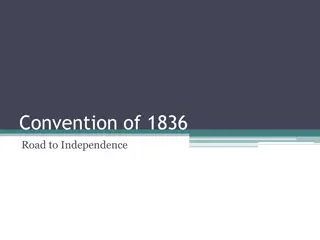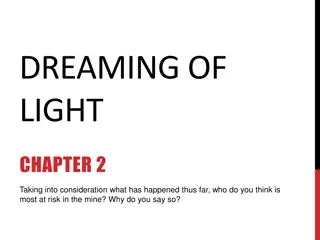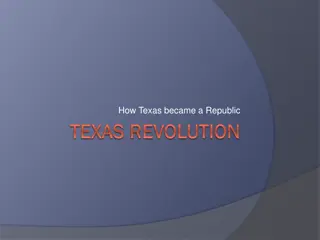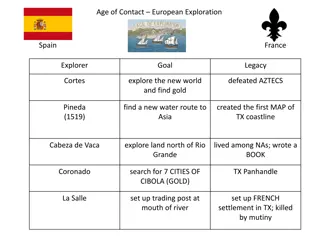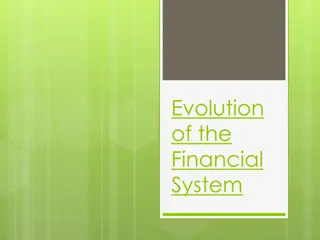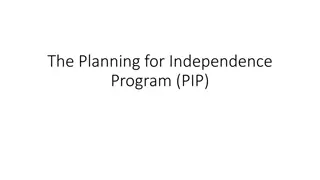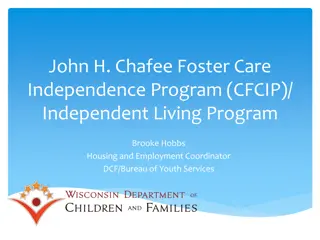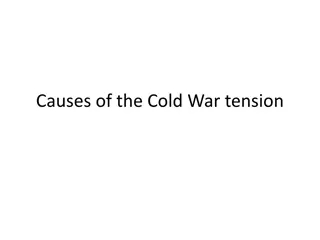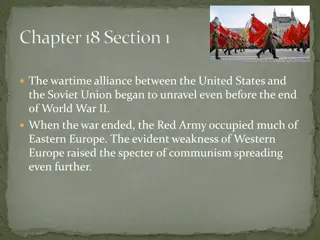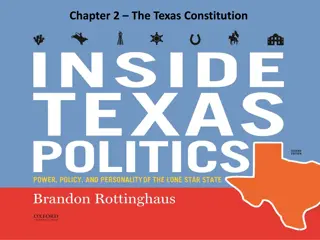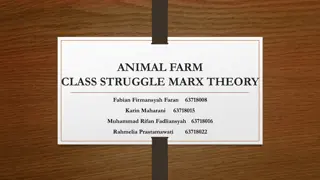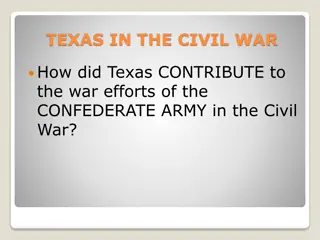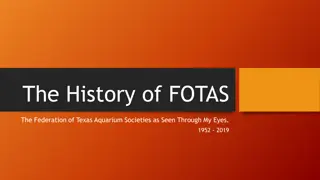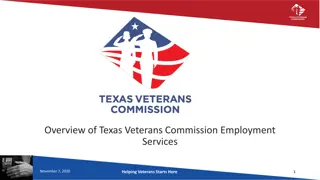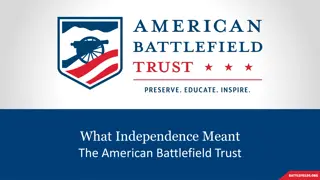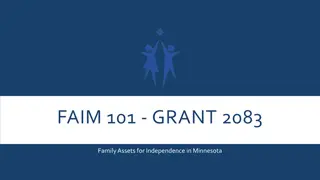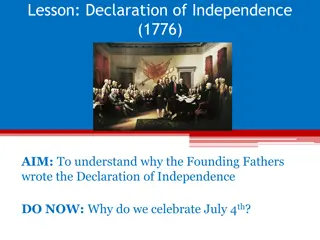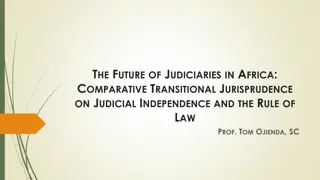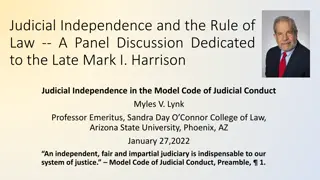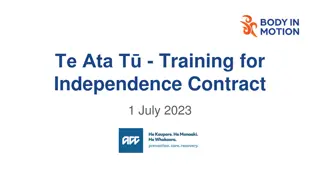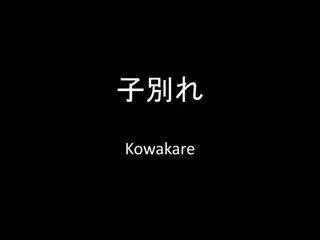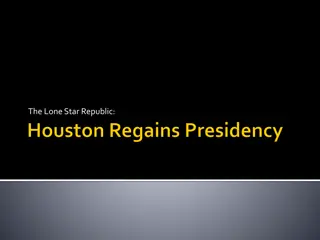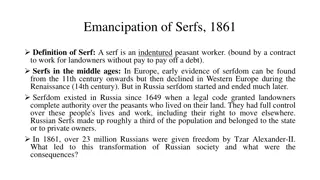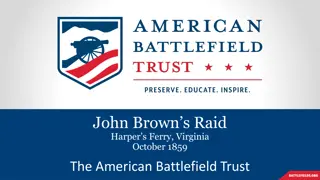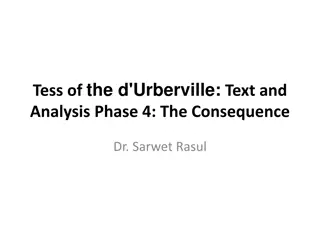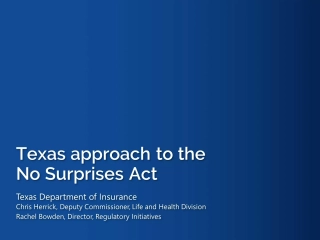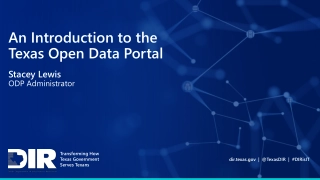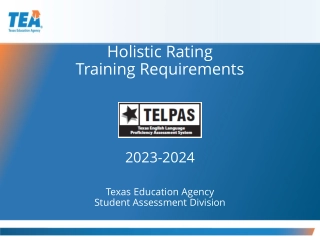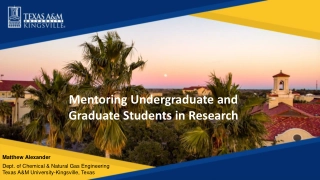Growing Tensions: Austin's Struggle for Texas Independence
Stephen F. Austin faces challenges in his mission to Mexico City, leading to his imprisonment and eventual release. Reforms begin in Texas, but trouble erupts again as tensions rise between Texas and Mexico.
Download Presentation

Please find below an Image/Link to download the presentation.
The content on the website is provided AS IS for your information and personal use only. It may not be sold, licensed, or shared on other websites without obtaining consent from the author. Download presentation by click this link. If you encounter any issues during the download, it is possible that the publisher has removed the file from their server.
E N D
Presentation Transcript
GROWING TENSIONS Part 3
AUSTINS MISSION IS STALLED In April of 1833, Stephen F. Austin begins his mission to take the resolutions to Mexico City. When he arrived, Santa Anna s government had not yet been organized, and no plans had been made for Texas. In Mexico City, a cholera epidemic had killed thousands of people. After waiting 3 months in Mexico City, Austin became impatient from his lack of accomplishments. Austin wrote the authorities in San Antonio and encouraged them to form their own government.
AUSTIN IS IMPRISONED AND RELEASED In November, Santa Anna finally returned to Mexico City and agreed to some of the reforms presented by Austin. Santa Anna would not agree to allow Texas separate statehood, but agreed to repeal the law restricting immigration from the U.S. Santa Anna agreed to improve the court and postal systems. Austin left to return home in December of 1833.
When Austin reached Saltillo in 1834, he was arrested for the letter that he had sent authorities in San Antonio. He was taken back to Mexico City and put in prison for 1 year. Local officials from various towns began to press for Austin s freedom. Austin was released on bail on Christmas in 1834, but was required to remain in Mexico City. Austin was given complete freedom in July of 1835, and finally made it back home to Texas on September 1, 1835 after 2 years and 4 months.
REFORMS BEGIN IN TEXAS Cholera and malaria spread throughout Texas and Mexico, killing many people. 1834 was better in Texas. The reforms promised by Santa Anna had begun, including: Recognizing English as an official language for transactions. Allowing immigration from the U.S. Improving the court system. Increasing the number of Texas representatives in the state legislature. Granting religious tolerance.
During Austins imprisonment, the Mexican government sent Colonel Juan Almonte on an inspection tour of Texas. Almonte reported that all was quiet in Texas and to continue with the reforms.
TROUBLE ERUPTS AGAIN In early 1835, trouble broke out again between Texas and Mexico in Anahuac. Captain Antonio Tenorio was the commander of the garrison at Anahuac. Local Anahuac residents, led by Andrew Briscoe, quarreled with Tenorio over the customs duties. They argued that these taxes were not charged at other ports and refused to pay them until the law was enforced equally. Tenorio arrested Briscoe.
Briscoes arrest caused resentment among the colonists. A group led by William B. Travis went to Anahuac and forced Tenorio to surrender and leave Texas. Several Texas towns adopted resolutions assuring their loyalty to Mexico. Local San Felipe leaders wrote a letter of apology to General Martin Perfecto de Cos, commander of the Mexican forces in Coahuila.
COS REJECTS THE APOLOGY General Cos demanded that Texas officials arrest those involved in the disturbances and be turned over to the military for trial. Santa Anna was no longer a Federalist; he had become a Centralist. Cos also ordered the arrest of a distinguished Mexican politician, Lorenzo de Zavala, who had helped frame the Constitution of 1824. Cos announced that he was taking a group of soldiers to Texas to arrest those he considered disloyal.
TEXANS CALL FOR A CONSULTATION Texans were concerned because they were not willing to turn their friends over to the Mexican government. On August 15, 1835, the town of Columbia issued a call for a convention to discuss the situation. The meeting held on October 15, 1835 at Washington-on-the-Brazos became known as the Consultation. One group, known as the Peace Party, felt that the Consultation would only cause more problems.
Another group, known as the War Party, favored the Consultation and was led by settlers who had been disappointed when the Mexican government stopped issuing land grants in Texas. Leaders like William H. Wharton and William B. Travis favored an immediate declaration of independence from Mexico, even if it meant war. The invitation for the Consultation noted that the delegates should work for a peaceful solution. Stephen F. Austin approved of the Consultation because he was convinced that Santa Anna had become a dictator. Austin believed the time had come for the colonists to unite and act together for change.


